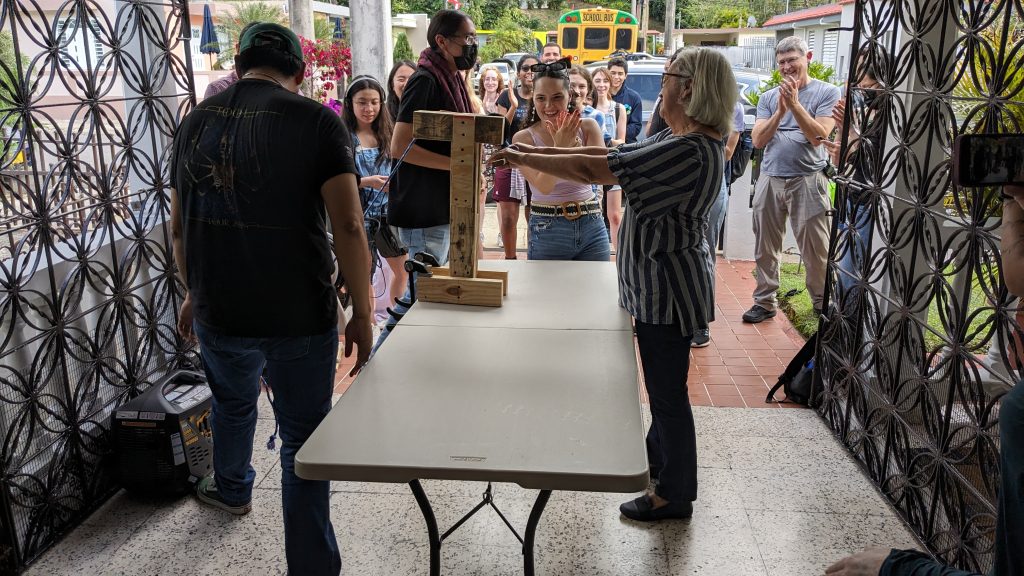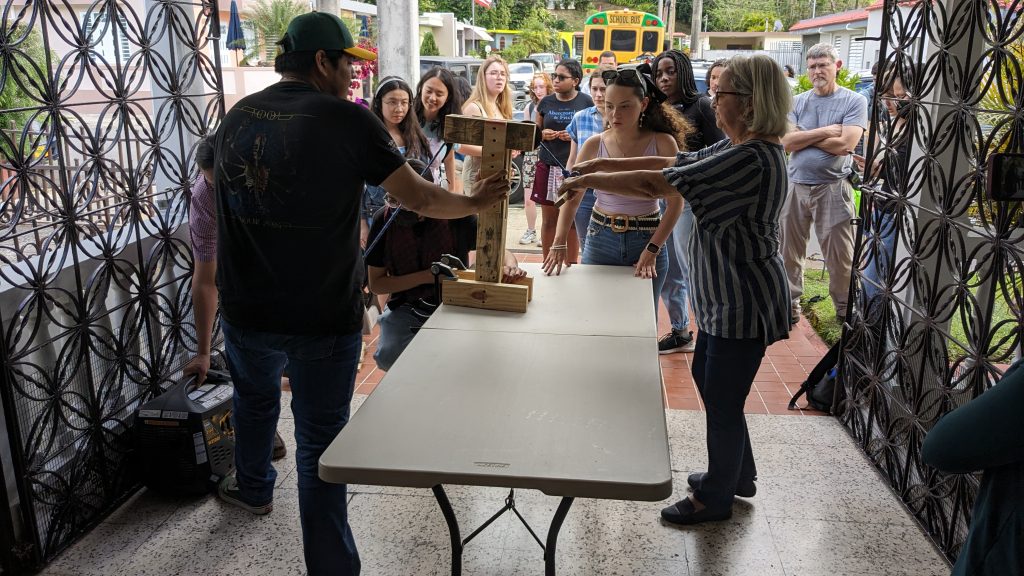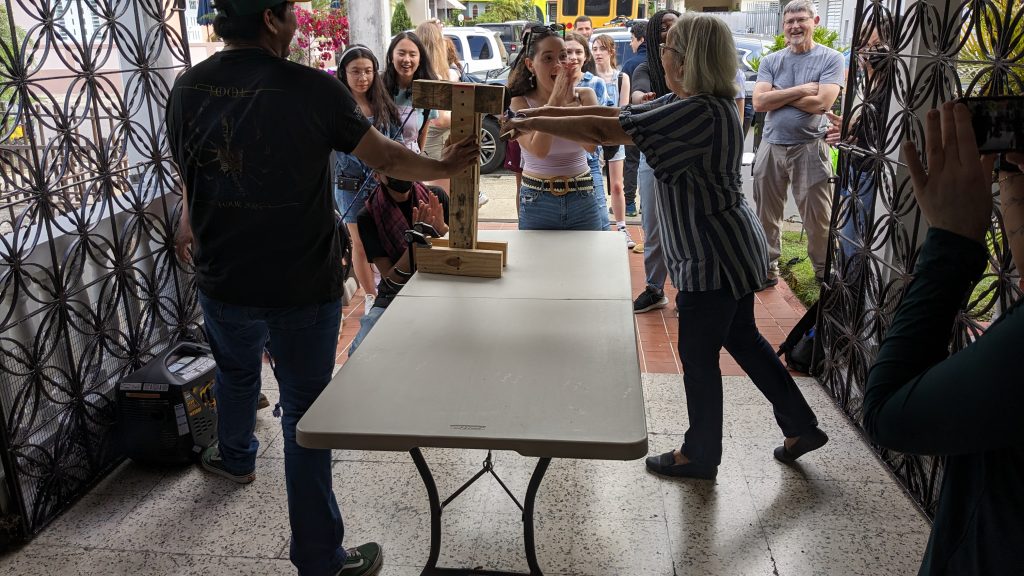Terrascope Builds Innovative Collaborations in Puerto Rico and Navajo Nation
This spring semester saw exciting new developments in partnerships the Terrascope first-year learning community has been building with educational institutions in Puerto Rico and the Navajo Nation. One key feature of these developing collaborations is their reciprocal and equitable nature: students and faculty at all three institutions play similar roles in the work; students from partner institutions visit MIT, in addition to MIT students visiting partners; and final showcases take place simultaneously on all campuses, instead of being centered at MIT. In this way, the partner students have a full and rich experience informed by MIT educational practices, and the MIT students gain skills in building true collaboration across differences in location, institutional focus, and cultural background and norms.
The first step in the process took place in the spring of 2023, when four students from Diné College in the Navajo Nation participated remotely in Terrascope Subject 2.00C, “Design for Complex Environmental Issues.” Project teams included students from both institutions, and the design problems assigned that year had to do with traditional farming in Navajo Nation, and so the Diné College students were able to engage their own expertise and life experiences in their teams’ work. During the Terrascope spring break field experience, Terrascopers travelled to Navajo Nation to work in person with their teammates, developing and testing prototypes and experiencing shop work in a very different setting from their own. At the end of the semester, the project showcase was conducted in full hybrid mode simultaneously on both campuses, and students from both institutions participated equally, presenting in-person on their own campus and remotely on the other.
In end-of-semester reflections, Diné College students spoke of overcoming their initial nervousness about keeping up with MIT students and ultimately believing that they had “as much right as anyone to be in that room.” Diné College faculty requested that the partnership continue, based on the extremely positive outcomes their students experienced. MIT instructors surveyed their own students, asking whether the educational benefit of the partnership was worth the extra effort and difficulty involved in building and maintaining a long-distance, cross-cultural team. All respondents replied that the experience had been so important for them that they felt Terrascope should continue the partnership even given the extra effort required.
This year Terrascope not only continued the partnership, but expanded it to include faculty and students at the University of Puerto Rico at Ponce (UPRP). The Terrascope theme problem had to do with the stability and reliability of electrical power in Puerto Rico. This year’s implementation of 2.00C included six UPRP students and five from Diné College, all participating fully in the class and receiving credit through specially created classes at their home institutions; 19 MIT students took the class, (significantly more than instructors had expected). Every team included students from every institution, and faculty and staff at all three institutions participated in instruction.
One key take-away from last year’s collaboration was that it would be helpful for students from different institutions to get to know one another in person at the beginning of the semester, rather than waiting until halfway through. Given that, Terrascope arranged for the Diné College and UPRP students and staff to travel to MIT for the first week of classes here. Instructors accelerated the subject calendar, so that teams could make significant progress during that week. The fellowship and camaraderie built during that week proved very important later in the semester, as teams navigated the difficult task of merging very different cultural styles of collaboration. Another important ingredient was sets of “team norms,” which each team developed at the beginning of the semester and updated throughout, as areas of difficulty came up during collaboration.
The “clients” served by this year’s teams were a number of Puerto Rican senior citizens who have gasoline-powered generators to use when the often-unstable grid electricity is not available, but who are either too weak or too physically constrained (e.g. in wheelchairs) to pull the cords that start the generators, requiring them to call on neighbors or relatives, who will likely be experiencing their own difficulties during the power outage. Each team produced multiple designs for apparatus that would make starting generators easier for these clients.



A highlight of the semester was the spring break field trip to Puerto Rico, on which the Terrascope group was joined by the group from Diné College (thanks to funding obtained by the Diné College instructional team). In addition to other activities, teams spent long hours working together in shops and classrooms at UPRP, putting the finishing touches on designed prototypes, and then the class traveled to the clients’ home town, to get direct feedback from the clients themselves. This was a rewarding and formative experience for the students. Each team had produced at least one prototype that the clients were able to use successfully, along with other prototypes that were not as successful. This enabled students to develop sets of principles to follow in future designs (e.g. “use the simplest technology possible”), and it also provided them with an understanding of specific aspects of the successful prototypes that could be improved further.
During the rest of the semester, each team chose one prototype design to focus on, and within each team, students at each campus specialized in improvements to specific areas of each prototype, working in constant communication to ensure that each subteam’s innovations meshed with the others’. Teams then combined the results of this work to develop unified designs, and each team built three copies of its design—one copy at each campus.
The final showcase for the class was held on all three campuses simultaneously in full hybrid mode, with members of the public and expert panelists at each campus to observe, ask questions, and try out the designs for themselves. Visitors at both Diné College and UPRP expressed interest in obtaining copies of the designs, and instructors are working with community members to determine the best way to disseminate the students’ work.
In end-of-semester reflections, students identified key factors in the collaboration’s success, including: time spent together at the beginning of the semester; developing and adapting team norms; regular self-examination by teams of their own processes; extensive communication using a variety of platforms (particularly Discord, WhatsApp and Instagram, but others as well); working together during the trip; visiting clients in person to test prototypes; and developing respect and understanding for cultural norms at other institutions, and applying that understanding to the way meetings were run.
Instructors have learned some additional lessons, particularly with respect to balancing numbers of students from each institution on each team, and building and maintaining regular and frequent communication among themselves. The past two years’ class implementations have themselves been prototypes, and all involved are looking forward to continuing to refine these exciting partnerships.
— Ari Epstein, Terrascope